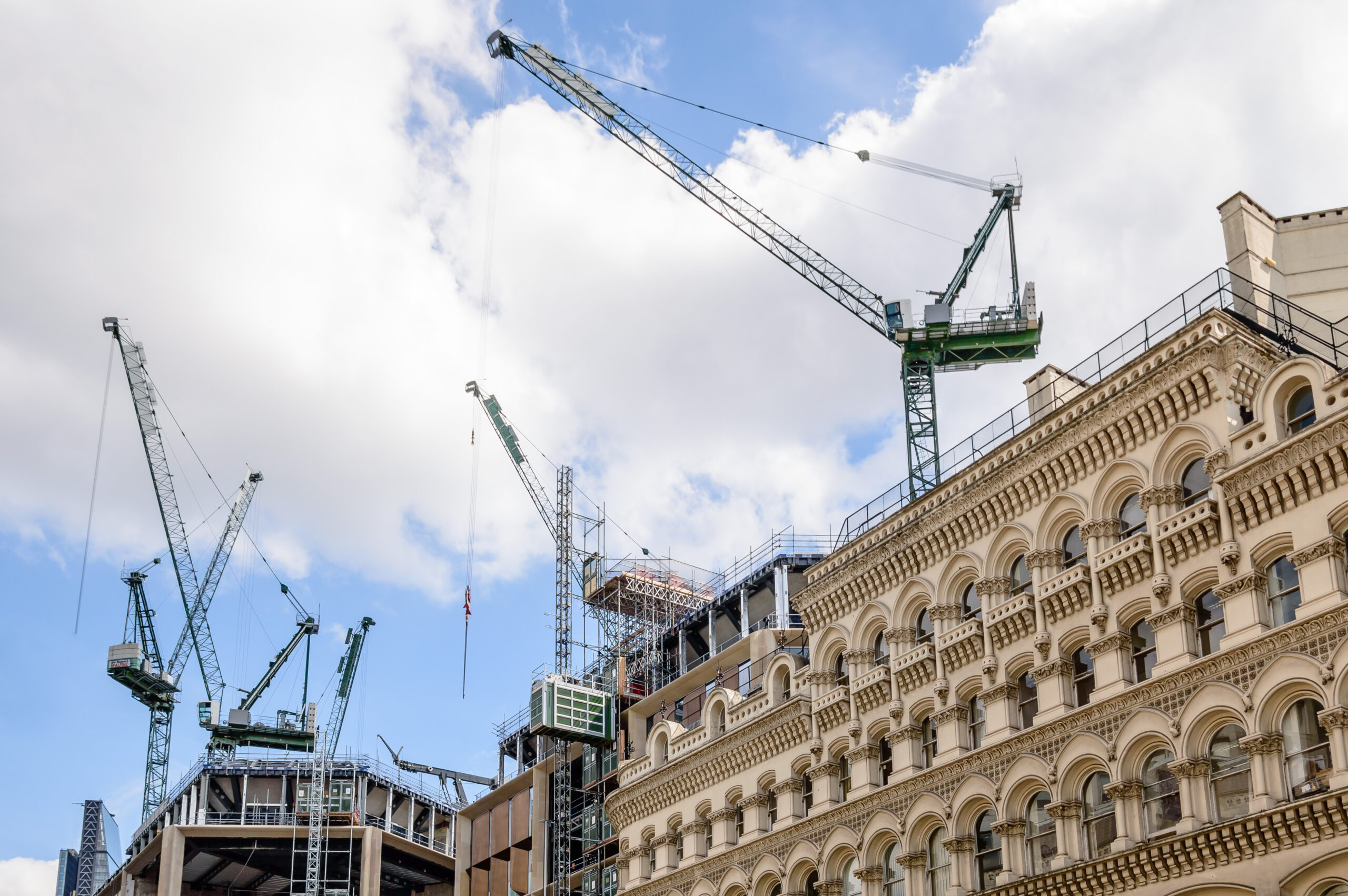
Published in: The Times (23.02.23) – pull-out supplement on Retrofitting & Decarbonisation
Updating the built environment should be a priority in the UK’s efforts to hit its 2050 decarbonisation targets, but the sector is worried about a lack of policy coordination from Westminster
Tim Cooper
The built environment accounts for a quarter of all greenhouse gas emissions, according to the UK Green Building Council (UKGBC). Simply retrofitting as many buildings as possible with better insulation or cleaner power would seem like a slam dunk, then, but it’s not so straightforward.
The government’s net-zero strategy includes measures to support retrofitting, from providing grants for repairs to promoting the use of heat pumps. Unfortunately, many in the property sector believe that such interventions are meagre, myopic and uncoordinated.
The UKGBC which has more than 600 members from across the sector, promotes green building methods. According to its analysis, the governments’ approach will reduce the built environment’s emissions by only 60% by 2050 – missing the net-zero goal by a mile.
In November 2022 the chancellor began to address this problem by pledging new investment aimed at cutting the UK’s energy demand by 15% before 2030.
“This is encouraging, but we still await the strategy and long-term, stable policies and investment behind that,” says Louise Hutchins, head of policy and public affairs at the UKGBC. “The government’s strategy needs to be more joined-up and commensurate with the scale of the challenge.”
Part of the problem has been a lack of big-picture thinking. Lee Fraine, head of building services and sustainability at property consultancy Rapleys, reports that much of the focus so far has been on the necessary building work, with insufficient attention paid to upgrading infrastructure to support these changes. For instance, decarbonising the nation’s public sector buildings alone will cost up to £30bn, according to government figures. But Fraine says that accounting for the necessary supporting infrastructure will push the final figure up towards £90bn.
Without those infrastructure upgrades, quick fixes may not work. For instance, a heat-pump system for a large business premises requires a big power source, which may necessitate energy upgrades for the surrounding area. A heat pump may cost a building owner £45,000, but the full cost – including infrastructure – could be £135,000. Some owners may feel that they can’t afford their part of the investment, while there’s plenty of griping about the cost on the government’s own backbenches.
Another problem is that some building owners are yet to appreciate the value of retrofitting, despite research from real-estate services giant JLL showing that sustainable buildings can support higher rents. Even if all building owners do come on board, there aren’t enough skilled professionals – including architects, designers and engineers – to deliver large scale retrofitting. A House of Lords committee recently found that there were fewer than 2,000 heat pump installers in the UK, but more than 130,000 gas engineers.
Gillian Charlesworth is CEO of the Building Research Establishment (BRE), a body that sets sustainability standards for buildings. She acknowledges the recent announcement of £5m in training grants to help 10,000 trainees become experts in low-carbon heating. But she says the government’s retrofitting strategy lacks provision for green jobs retraining.
“The government estimates that 50,000 qualified workers will be needed, but the Heating and Hotwater Industry Council suggests that we need 150,000 trained heat-pump installers. Without them, the UK won’t meet its 2050 targets,” Charlesworth says.
There are yet more barriers to retrofitting. Some owners don’t want to alter a building’s appearance or character, for example. Building work can bring inconvenience, while there are persistent shortages in the supply chain.
What needs to change? Chris Delaney, managing director of low-carbon energy adviser Green Building Renewables, points to a near neighbour that has been getting things right.
“Ireland offers an excellent illustration of a joined-up strategy,” he argues. “It has built an infrastructure of financing, advice, training and quality assurance to deliver retrofits nationwide through approved one-stop shops. Many UK stakeholders are raring to go on retrofitting. Done correctly, it’s an incredible opportunity to create thousands of jobs. With our organisations and skills, we could be a world leader. But the government must unlock the potential.”
Hutchins believes that the UK needs a comprehensive package of incentives, regulations, standards and planning reforms – for example, removing constraints that might block retrofitting in heritage buildings. The UKGBC would also like to see the monitoring of carbon impacts throughout a building’s life, as this transparency can show how much more sustainable retrofitting is than demolition.
The government has several policy levers at its disposal. It could encourage action, for instance, by reforming VAT and business rates or by offering investment rebates to incentivise retrofitting.
There’s a critical role for local government too. Manchester City Council is one of only a handful of UK authorities to have led on retrofitting. Elsewhere, cities such as New York, Melbourne and Vancouver are pioneering decarbonisation initiatives for buildings. New York has incentivised owners to conduct deep retrofits with a finance package offering long-term low interest rates.
The government did not respond in time when asked for a comment for this article, but industry bodies believe that it understands the need for more policies on retrofitting and is working on them.
Meanwhile, proactive property owners are leading with voluntary retrofitting solutions. The UKGBC reports that many of its members are using so-called green contracts to define responsibilities for managing emissions in a building.
Hutchins adds: “Our members are also using technologies to improve energy performance and installing insulation, heat pumps, solar power and measures such as green roofs to capture carbon.”
Business leaders are increasingly looking at their options too. For example, the BRE’s environmental assessment method enables firms to improve their buildings’ energy performance from design through to construction, use and refurbishment. Charlesworth says that such certification can help building owners to attract green investment and avoid compliance failures and reputational risk, while maintaining long-term asset values.
As the government refreshes its energy strategy, the built environment sector is hoping for a strong signal that retrofitting will be an exciting growth area. But, until more coordinated policies arrive, many players will have to go it alone, voluntarily fast-tracking their retrofitting measures.
Related news
Rapleys Launches New Retrofit Service
Strategic property consultancy Rapleys has launched a new dedicated ‘Retrofitting’ service with the appointment of Titus Wing heading up the team.





